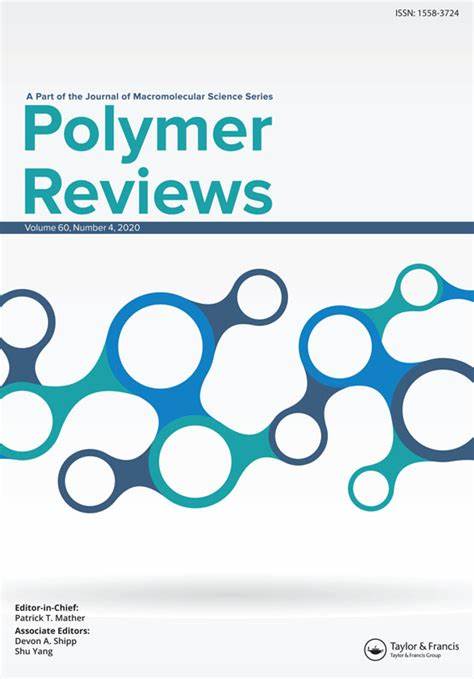多功能环氧基Joncryl®ADR增链热塑性塑料的研究进展
IF 11.9
2区 化学
Q1 POLYMER SCIENCE
引用次数: 43
摘要
摘要反应性添加剂允许在加工过程中适应热塑性聚合物的性能和以后的使用。在反应过程中使用多功能环氧化合物苯乙烯-丙烯酸扩链剂(CE)进行化学改性是目前防止降解和提高热塑性塑料的加工能力和最终性能的一种成熟方法。这些CE最常见的代表之一是以其商品名Joncryl®而闻名。自几年前以来,Joncryl®ADR在工业界和学术界的重要性日益增加。它可以作为反应性熔体改性剂应用于许多聚合物,主要是聚酯,它在很大程度上影响流变性能和热行为。本文综述了Joncryl®ADR的反应行为,以及该改性引起的聚合物流变行为的变化。Joncryl®ADR掺入导致剪切粘度增加,熔体强度更高,并且由于支链和/或甚至交联的形成而导致应变硬化。结晶也直接受到链拓扑结构变化的影响。最后,这篇综述文章广泛地讨论了使用Joncryl®进行加工的好处,如稳定、回收、发泡和聚合物共混。图形抽象本文章由计算机程序翻译,如有差异,请以英文原文为准。
A Review on Multifunctional Epoxy-Based Joncryl® ADR Chain Extended Thermoplastics
Abstract Reactive additives allow to adapt the properties of thermoplastic polymers during processing and for their later use. The chemical modification using multifunctional epoxide styrene-acrylic chain extenders (CE) in reactive processes is by now an established method to prevent degradation and to improve the process ability as well as the final properties of thermoplastics. One of the most common representatives of these CE is better known under its trade name Joncryl®. Since several years ago, Joncryl® ADR owes an ever-growing importance in industry and academia. It can be applied as reactive melt modifier for numerous polymers, mainly polyesters, where it largely affects the rheological properties and the thermal behavior. This review focuses on the reactive behavior of Joncryl® ADR as well as the induced changes in the rheological behavior of the polymers caused by this modification. The Joncryl® ADR incorporation leads to an increased shear viscosity, a higher melt strength and induces strain hardening due to the formation of branched chains and/or even crosslinking. The crystallization is also directly influenced by the changed chain topology. Eventually, this review article extensively addresses the benefits of using Joncryl® for processing such as stabilization, recycling, foaming, and polymer blending. Graphical Abstract
求助全文
通过发布文献求助,成功后即可免费获取论文全文。
去求助
来源期刊

Polymer Reviews
工程技术-高分子科学
CiteScore
24.80
自引率
0.80%
发文量
21
审稿时长
6 months
期刊介绍:
Polymer Reviews is a reputable publication that focuses on timely issues within the field of macromolecular science and engineering. The journal features high-quality reviews that have been specifically curated by experts in the field. Topics of particular importance include biomedical applications, organic electronics and photonics, nanostructures, micro- and nano-fabrication, biological molecules (such as DNA, proteins, and carbohydrates), polymers for renewable energy and environmental applications, and interdisciplinary intersections involving polymers.
The articles in Polymer Reviews fall into two main categories. Some articles offer comprehensive and expansive overviews of a particular subject, while others zero in on the author's own research and situate it within the broader scientific landscape. In both types of articles, the aim is to provide readers with valuable insights and advancements in the field of macromolecular science and engineering.
 求助内容:
求助内容: 应助结果提醒方式:
应助结果提醒方式:


